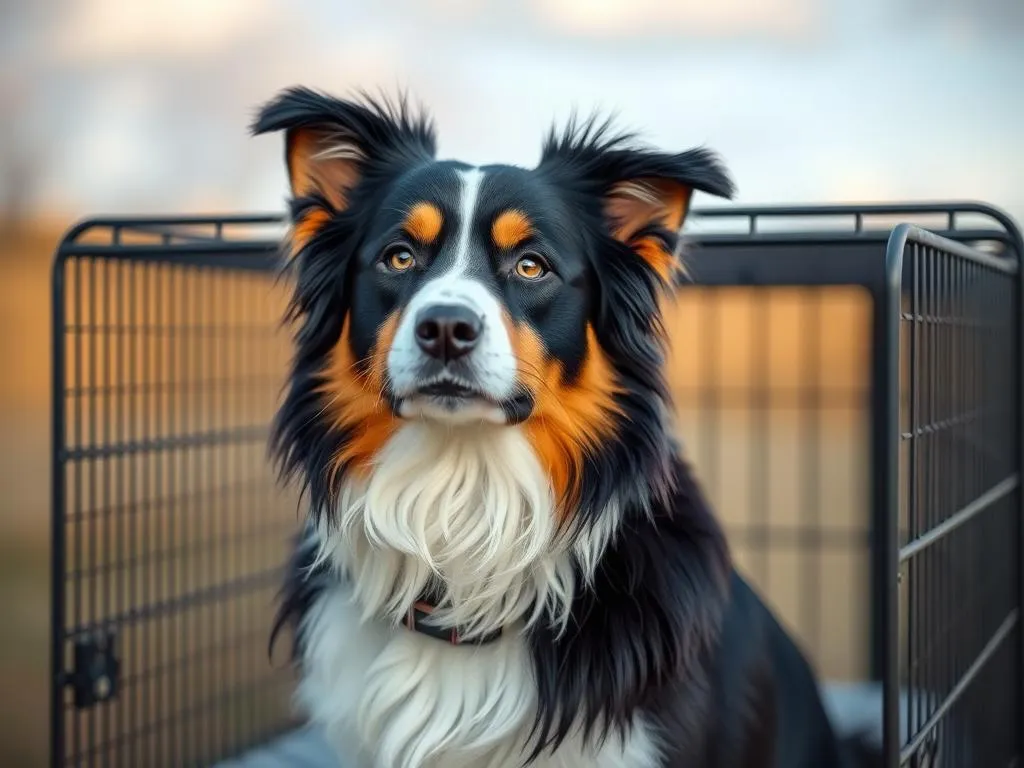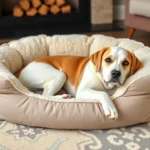
Introduction
Crate training is a widely used method for teaching dogs to feel safe and comfortable in a confined space. It involves introducing a dog to a crate—a secure enclosure that serves as their personal den. Crate training offers numerous benefits, including providing a safe space for the dog when unsupervised, aiding in house training, and reducing anxiety during travel.
Choosing the right crate size is crucial for the comfort and safety of your Border Collie. An appropriately sized crate can prevent issues such as anxiety and restlessness, allowing your pet to feel secure. Conversely, a crate that is too small can lead to discomfort, while one that is too large may cause anxiety due to excess space.
Border Collies are known for their high energy levels, intelligence, and agility. These dogs typically stand between 18 to 22 inches tall and weigh between 30 to 45 pounds. Their temperament is characterized by a strong work ethic and a desire for mental and physical stimulation, making it essential to consider their specific needs when choosing a crate.
This article aims to provide detailed information on how to select the appropriate crate size for your Border Collie, ensuring a comfortable and secure environment for your furry friend.
Understanding Border Collies
Physical Characteristics
Adult Border Collies generally weigh between 30 to 45 pounds and stand around 18 to 22 inches tall at the shoulder. They have a well-proportioned body with a strong, athletic build. Their coat can vary in length and texture, but they are typically known for having a dense double coat that protects them from varying weather conditions.
Behavioral Traits
Border Collies are celebrated for their energetic and intelligent nature. They thrive on physical activity and mental challenges, requiring regular exercise and stimulation to prevent boredom and behavioral issues. This breed is known for its herding instinct, which can manifest in various ways, including chasing smaller animals or even herding children during play.
Common Crate Training Challenges
While many dogs adapt quickly to crate training, Border Collies can sometimes face challenges. Issues such as separation anxiety can arise, especially if they are not used to being left alone. Additionally, their high intelligence may lead to attempts to escape or manipulate their environment if they feel confined or uncomfortable.
Factors Influencing Crate Size
Age and Growth of the Dog
When selecting a crate, consider the age and growth stage of your Border Collie. Puppies grow rapidly, and the crate that fits them at 8 weeks will likely be too small by the time they reach adulthood. It is essential to choose a crate that accommodates their growth while providing enough space to move comfortably.
Purpose of the Crate
The purpose of the crate can influence the size you choose. If the crate is primarily for training, it might need to be smaller to discourage messes. However, if it is for travel, a larger crate could be beneficial for comfort on longer journeys. Understanding the intended use will guide you in selecting the right dimensions.
Comfort and Safety Needs
Border Collies require a balance between space for movement and snugness for security. A crate that is too large can lead to anxiety, as the dog may feel insecure in such an expansive space. On the other hand, a crate that is too small can cause discomfort, making the dog reluctant to use it.
Optimal Crate Size for Border Collies
General Size Guidelines
For adult Border Collies, the recommended crate dimensions are typically around 36 inches in length, 24 inches in width, and 28 inches in height. This size allows enough room for the dog to stand, turn around, and lie down comfortably. It is important to note that different manufacturers may have slightly varying dimensions, so always check specific measurements.
Measuring Your Border Collie
To determine the right crate size, measure your Border Collie from the tip of their nose to the base of their tail for length, and from the ground to the top of their head while standing for height. Here’s a quick step-by-step guide:
- Length Measurement: Measure from the nose to the base of the tail.
- Height Measurement: Measure from the ground to the highest point of the head while standing.
- Add Extra Space: Add 2-4 inches to both measurements to ensure comfort.
Types of Crates
There are various crate styles available, each with their own benefits and drawbacks:
-
Wire Crates: These are highly durable and provide good ventilation. They are easy to clean and can be adjusted with dividers for growing puppies.
-
Plastic Crates: Often used for travel, these provide a snug and secure environment. However, they may not offer as much ventilation as wire crates.
-
Soft-Sided Crates: Lightweight and portable, these crates are excellent for travel and short-term use but may not provide as much security for a determined chewer.
Choosing the Right Crate
Key Features to Look For
When selecting a crate for your Border Collie, consider several important features:
-
Ventilation and Visibility: Adequate airflow and visibility can help your dog feel more comfortable and less confined.
-
Durability and Ease of Cleaning: Choose a crate made of sturdy materials that can withstand wear and tear, especially if your dog is an active chewer.
Adjustability and Expandability
Many crates come with dividers that allow for adjustability as your Border Collie grows. This feature can save you money, as you won’t need to purchase new crates as your dog matures. Transitioning from a puppy crate to an adult size can be seamless with the right divider system.
Brand Recommendations
Several brands are known for producing high-quality crates suitable for Border Collies:
-
MidWest Homes for Pets: Offers durable wire crates with dividers and a good reputation for sturdiness.
-
Petmate: Known for their solid plastic crates, offering security and comfort for travel.
-
EliteField: Provides soft-sided crates that are portable and convenient for short trips.
Each brand has its pros and cons, so consider your specific needs when making a choice.
Tips for Successful Crate Training
Introducing the Crate
Introducing your Border Collie to their new crate should be a gradual process. Here’s a step-by-step guide:
-
Place the Crate in a Common Area: Start by placing the crate in a location where your dog spends a lot of time.
-
Make it Inviting: Add soft bedding and toys to make the crate inviting.
-
Encourage Exploration: Allow your dog to explore the crate at their own pace. Use treats to encourage them to enter willingly.
-
Close the Door Gradually: Once your dog is comfortable entering, begin closing the door for short periods while they are inside.
Positive Reinforcement Techniques
Using positive reinforcement can significantly enhance the crate training experience. Here are some techniques to consider:
-
Treats and Toys: Reward your dog for entering the crate with treats and favorite toys.
-
Praise: Use praise and affection to reinforce positive behavior.
-
Short Duration: Start by closing the crate door for a few minutes and gradually increase the duration as your dog becomes more comfortable.
Avoiding Common Mistakes
Crate training can be challenging, and many pet owners make mistakes. Here are some pitfalls to avoid:
-
Using the Crate as Punishment: Never use the crate as a form of punishment, as it will create negative associations.
-
Ignoring Signs of Distress: Be attentive to signs that indicate the crate is too small or causing anxiety, such as whining or excessive barking.
-
Rushing the Process: Take your time with crate training. Patience is key to helping your Border Collie feel secure in their crate.
Conclusion
In conclusion, selecting the right crate size for a Border Collie is vital for their comfort and well-being. Understanding the physical and behavioral characteristics of this intelligent breed can guide pet owners in making informed decisions. Remember to measure your dog accurately and consider their growth, the purpose of the crate, and their comfort needs when choosing the right size.
Crate training can be an enriching experience for both you and your Border Collie. By being patient and attentive, you can create a positive environment that fosters a sense of security for your pet.








